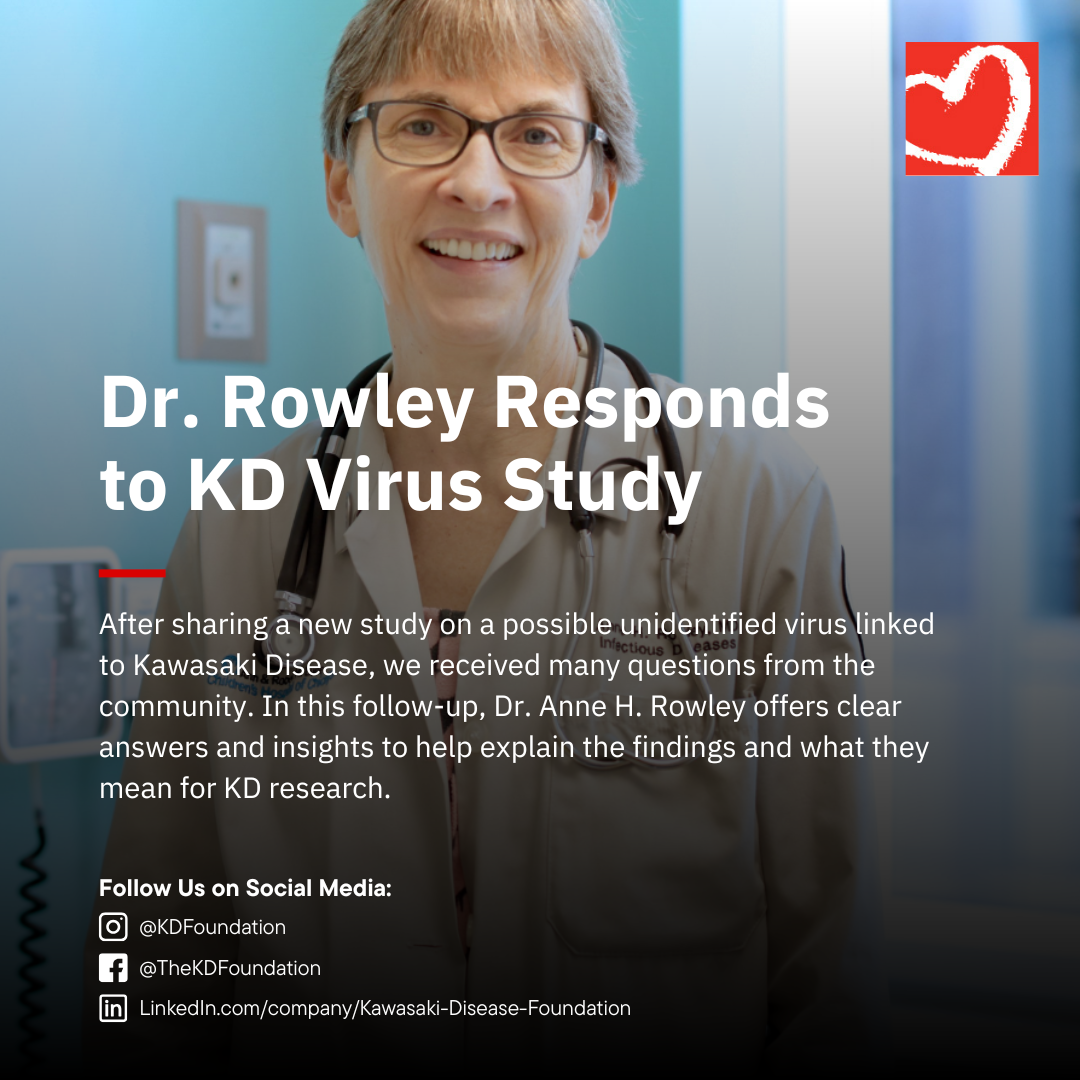
After we shared a recent study exploring the possibility of an unidentified virus as the cause of Kawasaki Disease, we received many thoughtful comments, questions, and concerns from our community. We’re grateful for your engagement and curiosity. To provide clarity and context, Dr. Anne H. Rowley, who led the study, offered a detailed explanation addressing some of the most frequently asked questions and common points of confusion. Her insights help illuminate how the study’s conclusions were reached and what the findings may mean for the future of KD research. You can read her full response below.
“Thank you for all the comments and questions! I will try to address some of the questions below. The data point to a “new” respiratory virus as the cause of KD, not one of the known respiratory viruses. While many viruses that enter the body through the respiratory tract cause respiratory symptoms, some do not. For example, Fifth’s disease is caused by a respiratory virus that results in fever and rash and other symptoms but not respiratory symptoms. We all agree that children with KD don’t have much in the way of respiratory symptoms.
Children can occasionally have infections with more than one infectious agent at the same time. For example, it is not uncommon for us to see children at our hospital who have more than one respiratory virus infection at the same time or who have strep and a respiratory virus at the same time. Similarly, occasionally children with Kawasaki disease also have another infection like RSV, EBV, strep or something else at the same time. The lack of consistent identification of any of these infectious agents in children with KD argues strongly against these known infections as the cause of KD. When Dr. Kawasaki first identified cases of KD in Japan, there were no rugs in homes, and therefore no exposure to rug shampoo. This is the strongest evidence against rug shampoo as the cause of KD. Because KD occurs in young children during a time when vaccines are commonly administered, studies have examined whether KD occurs more commonly in vaccinated vs unvaccinated children, and no difference has been seen with any vaccine. KD is not caused by vaccination.
MIS-C has some of the same symptoms as KD, but they are different diseases with different complications. In siblings in Japan who have developed KD following their brother/sister, it usually happens either the same day (suggesting they acquired the infection at the same time) or about 7 days after their brother/sister first became sick (suggesting that one week might be the duration from exposure to the sibling and the onset of symptoms). The usual ~4 week lag time of COVID and MIS-C was not observed in siblings who both developed KD.
The epidemiology of KD strongly points to a very common unknown respiratory infectious agent that usually results in asymptomatic infection but can cause KD in a small subset of genetically predisposed children. The epidemiology of KD indicates that once you have had the infection, you are almost always immune to having it again. Maternal antibodies may provide some protection to newborns, but then KD cases start to occur commonly around age 6 months, when maternal antibodies have gone down. KD continues to occur in early childhood, picking out those who are genetically predisposed. Those not predisposed develop asymptomatic infection and become immune, accounting for the rarity of KD in older children and adults. This is the scenario that best fits the epidemiologic data for KD.”
We are incredibly grateful to Dr. Rowley for taking the time to provide this thoughtful explanation and to our community for asking important questions and staying engaged in the conversation around KD research. As always, we remain committed to keeping you informed and supporting ongoing efforts to better understand Kawasaki Disease. If you have additional questions or would like to learn more, please don’t hesitate to reach out or explore more resources on our website.
